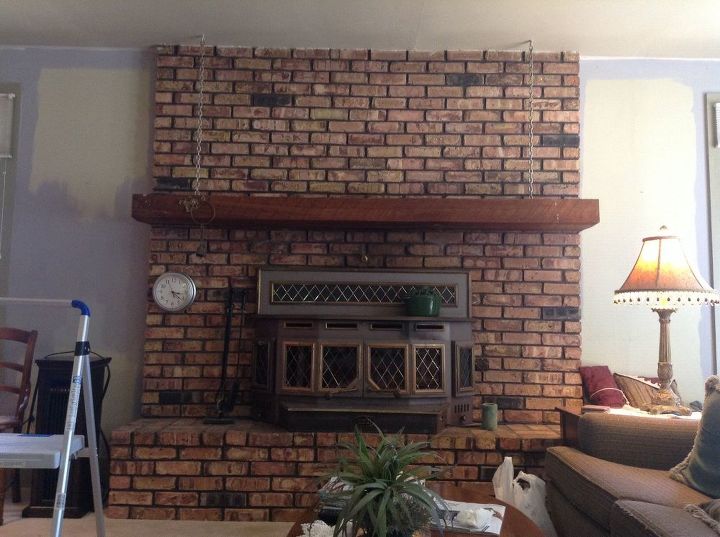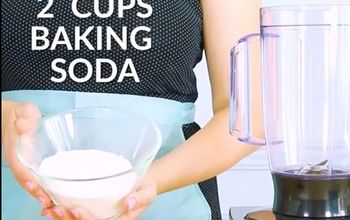How to paint my porch?
I have a cement porch that I’ve painted several times over the years. Every time after a few months it starts peeling or bubbling up. I’ve used the porch paint and whatever else was recommended but it still does the same. I do prep the surface before painting. The porch is covered. Any ideas??? It’s so ugly. Help please.
Related Discussions
Should I paint or stain my oak kitchen cabinets?
I was wondering if you could help me with something -- I have an entirely oak kitchen. I know it's the rage now to paint or gel stain cabinets. I've been considering ... See more
How to paint a metal front door?
How do I paint my front door? It's metal.
How to paint grout?
How do I paint grout to change the color? The grout is in great shape, but the color - meh.
How to whitewash a brick fireplace?
What is the best method to whitewash bricks surrounding a fireplace?
My porch floor is slippery! What can I paint over it to make it safer?
We recently painted our porch with porch paint and it looks nice but is very slippery due to the high humidity in our area (Florida). What should we paint over it to ... See more
Need a method to paint a porch swing
We've just added a pool in the back yard. My porch swing has never been painted and I'd like to update porch to a beach theme. What kind of paint won't be heavy and... See more




R u using specific paint with primer hopefully in it that is for concrete
Types of Concrete Primer
It doesn’t matter whether you’re painting an indoor or outdoor surface—if you want it to look as good as possible, primer is an absolute must. When you are painting concrete, there are four different types of primer to choose from—acrylic primer, polyurethane primer, epoxy primer, and silane penetrating sealer. Here’s more about how they differ and which is the best choice for you:
Acrylic Primer: Since concrete is very absorptive in nature, an oil-based primer would not provide the best surface for paint. Because of this, many of popular primers are made from acrylic and water, which is able to absorb into the concrete, bonding to the surface and creating the perfect surface for applying paint.
Polyurethane Primer: This type is perfect for surfaces with stains or imperfections. A polyurethane primer provides a strong grip for paint on concrete surfaces and is very resistant to damage.
Epoxy primer: Although it provides a really thin finish, it creates a very strong bond to concrete. Epoxy primer is actually able to absorb into the concrete and creates a great grip on the surface of the concrete for painting. Because this type of primer is so durable, it is the most appropriate for industrial or commercial buildings.
Silane Penetrating Sealer: This sealer is perfect for use outdoors since it’s water resistant and helps to protect concrete from extreme changes in temperature. Silane Penetrating Sealer is also resistant to the effects of chemicals and biological growth.
How to Apply Primer on Concrete
Painting a concrete surface is significantly more involved than painting a wall. Concrete has to be specially prepped for paint, or the paint simply won’t adhere as it should. Here’s the right way to do it:
Strip Old Paint: If the concrete surface was painted previously, it is important to remove any paint that is peeling or flaking. For an indoor concrete surface, use tools like a paint scraper or wire brush to remove paint. For outdoor surfaces, a power washer will quickly remove old paint, as well as dirt and weeds.
Clean the Concrete Surface: Concrete is a unique material because it is very absorptive—it easily traps dirt, grease, and oil. For a clean and even coat of paint, your concrete surface will need to be thoroughly cleaned before primer is applied. There are several cleaners on the market created specifically for concrete cleaning. Trisodium phosphate will remove grease and oil, and Krud Kutter has a few different types of more earth-friendly concrete cleaner options.
Seal Interior Concrete: Concrete that is located inside of a home has to be sealed. This is because concrete is a highly absorptive surface and without a seal, moisture can seep inside through concrete. Use a strong sealer to fix any cracks and seal the interior surface of the concrete completely.
Apply Primer: Once you’ve properly prepared the surface of the concrete, you can apply primer according to instructions. Concrete primer is specifically designed to absorb into the surface of concrete, filling imperfections and creating a smooth surface for the paint. Most primers will dry in a few hours, but home improvement professionals suggest waiting a full eight hours after priming before applying paint just to be sure.
Once a concrete surface has been cleaned, sealed, and primed, it is ready for paint. There are specific paint products called masonry paint, that are created for painting concrete. You will also need to invest in brushes designed for this type of product, which can be found at most hardware stores.
While priming a concrete surface seems like one more unnecessary step, it is actually a crucial part of your concrete painting project. Without the appropriate primer, you can expect a poor finish to your project, as well as peeling and cracking of the paint over time. Following these steps, however, will reward you with a thoroughly beautiful paint job that will withstand weather changes and years of wear and tear.Additional info. https://www.bobvila.com/articles/painting-concrete-floors/
We use Behr Deckover from Home Depot on our ugly beat up porch. It has a texture to it because our porch was slippery when wet. But you can get plain Deckover product that we used for the vertical walls of the porch. Our porch is exposed and we have had to do again about every five years...perhaps a covered porch would last longer
I forgot to add in my answer a novel to get the Deckover that says for concrete.
All I know is we've been happy with it for years...just sharing my experience on a concrete porch